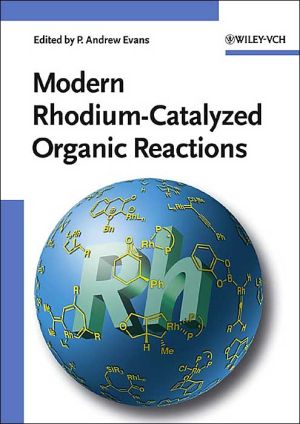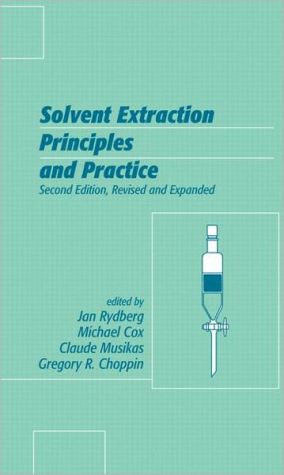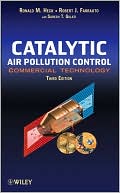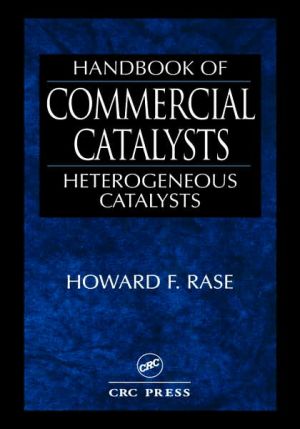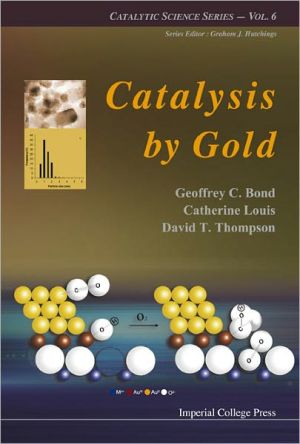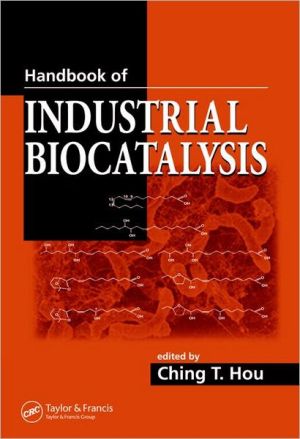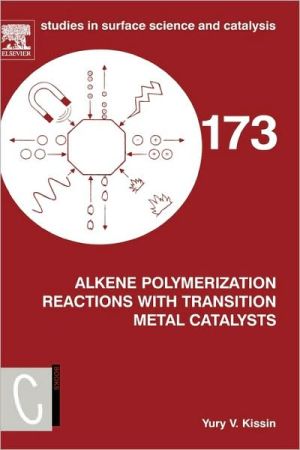Modern Rhodium-Catalyzed Organic Reactions
Rhodium has proven to be an extremely useful metal due to its ability to catalyze an array of synthetic transformations, with quite often-unique selectivity. Hydrogenation, C-H activation, allylic substitution, and numerous other reactions are catalyzed by this metal, which presumably accounts for the dramatic increase in the number of articles that have recently emerged on the topic.\ P. Andrew Evans, the editor of this much-needed book, has assembled an internationally renowned team to...
Search in google:
Rhodium has proven to be an extremely useful metal due to its ability to catalyze an array of synthetic transformations, with quite often-unique selectivity. Hydrogenation, C-H activation, allylic substitution, and numerous other reactions are catalyzed by this metal, which presumably accounts for the dramatic increase in the number of articles that have recently emerged on the topic. P. Andrew Evans, the editor of this much-needed book, has assembled an internationally renowned team to present the first comprehensive coverage of this important area. The book features contributions from leaders in the field of rhodium-catalyzed reactions, and thereby provides a detailed account of the most current developments, including chapters written by D. J. Austin, J. M. Brown, K. Brummond, J. du Bois, H. M. Davies, M. P. Doyle, P. A. Evans, K. Fagnou, G. C. Fu, T. Hayashi, N. Jeong, J. L. Leighton, I. Matsuda, I. Ojima, J. E. Robinson, D. F. Taber, P. A. Wender, F. G. West and X. Zhang. An essential reference text for researchers at all levels in the general area of organic chemistry. This book provides an invaluable overview of the most significant developments in this important area of research, and will no doubt be an essential text for researchers at academic institutions and professionals at pharmaceutical/agrochemical companies.
Foreword. Preface. List of Contributors. 1 Rhodium-Catalyzed Asymmetric Hydrogenation (Yongxiang Chi, Wenjun Tang, and Xumu Zhang). 1.1 Introduction. 1.2 Chiral Phosphorous Ligands. 1.3 Applications of Chiral Phosphorous Ligands in Rhodium-Catalyzed Asymmetric Hydrogenation. 1.4 Conclusion. 1.5 References. 2 Rhodium-Catalyzed Hydroborations and Related Reactions (John M. Brown). 2.1 Introduction. 2.2 General Advances in Catalytic Hydroboration. 2.3 Advances in Asymmetric Hydroboration. 2.4 Catalytic Diboration of Alkenes. 2.5 Summary and Conclusions. 2.6 References. 3 Rhodium(I)-Catalyzed Asymmetric Addition of Organometallic Reagents to Electron-Deficient Olefins (Kazuhiro Yoshida and Tamio Hayashi). 3.1 Introduction. 3.2 Addition of Organoboron Reagents to α,β-Unsaturated Ketones. 3.3 Mechanism. 3.4 Addition of Organoboron Reagents to Other Electron-Deficient Olefins. 3.5 Addition of Organotin and -silicon Reagents. 3.6 New Aspects of Addition of Organoboron and -titanium Reagents. 3.7 Outlook. 3.8 References. 4 Recent Advances in Rhodium(I)-Catalyzed Asymmetric Olefin Isomerization and Hydroacylation Reactions (Gregory C. Fu). 4.1 Rhodium(I)-Catalyzed Asymmetric Isomerization of Olefins. 4.2 Rhodium(I)-Catalyzed Asymmetric Hydroacylation of Olefins and Alkynes with Aldehydes. 4.3 References. 5 Stereoselective Rhodium(I)-Catalyzed Hydroformylation and Silylformylation Reactions and their Application to Organic Synthesis (James L. Leighton). 5.1 Introduction. 5.2 Hydroformylation. 5.3 Silylformylation. 5.4 Conclusion. 5.5 References. 6 Carbon–Carbon Bond–Forming Reactions Starting from Rh–H or Rh–Si Species (Isamu Matsuda). 6.1 Introduction. 6.2 Background. 6.3 Design of Reactions Starting from Insertion into a Rh–H Bond. 6.4 Design of Reactions Starting from Insertion into a Rh–Si Bond. 6.5 Conclusion. 6.6 References. 7 Rhodium(I)-Catalyzed Cycloisomerization and Cyclotrimerization Reactions (Masaki Fujiwara and Iwao Ojima). 7.1 Introduction. 7.2 Carbocyclization. 7.3 Cascade Carbocyclization. 7.4 Carbonylative Carbocyclization. 7.5 Conclusion. 7.6 References. 8 The Rhodium(I)-Catalyzed Alder-Ene Reaction (Kay M. Brummond and Jamie M. McCabe). 8.1 Introduction. 8.2 Diene Alder-Ene Reactions. 8.3 Enyne Alder-Ene Reactions. 8.4 Allenyne Alder-Ene Reactions. 8.5 Kinetic Resolution. 8.6 Other Rhodium-Catalyzed Ene-Type Reactions. 8.7 Conclusion. 8.8 References. 9 Rhodium-Catalyzed Nucleophilic Ring Cleaving Reactions of Allylic Ethers and Amines (Keith Fagnou). 9.1 Introduction. 9.2 Seminal Work. 9.3 Asymmetric Reactions with Oxabicyclic Alkenes. 9.4 Azabicyclic Alkenes. 9.5 Properties of the PPF-PtBu2 Ligand. 9.6 Mechanistic Working Model. 9.7 Vinyl Epoxides. 9.8 Conclusion. 9.9 References. 10 Rhodium(I)-Catalyzed Allylic Substitution Reactions and their Applications to Target Directed Synthesis (David K. Leahy and P. Andrew Evans). 10.1 Introduction. 10.2 Regioselective Rhodium-Catalyzed Allylic Alkylation. 10.3 Enantiospecific Rhodium-Catalyzed Allylic Alkylation. 10.4 Enantioselective Rhodium-Catalyzed Allylic Alkylations. 10.5 Conclusion. 10.6 References. 11 Rhodium(I)-Catalyzed [2+2+1] and [4+1] Carbocyclization Reactions (Nakcheol Jeong). 11.1 General Introduction to Rhodium-Mediated Carbocyclizations. 11.2 [2+2+1] Carbocyclization. 11.3 [4+1] Carbocyclization. 11.4 Conclusion. 11.5 References. 12 Rhodium(I)-Catalyzed [4+2] and [4+2+2] Carbocyclizations (John E. Robinson). 12.1 Introduction. 12.2 Rhodium(I)-Catalyzed [4+2] Carbocyclization Reactions. 12.3 Rhodium(I)-Catalyzed [4+2+2] Carbocyclization Reactions. 12.4 References. 13 Rhodium(I)-Catalyzed [5+2], [6+2], and [5+2+1] Cycloadditions: New Reactions for Organic Synthesis (Paul A. Wender, Gabriel G. Gamber, and Travis J. Williams). 13.1 Introduction. 13.2 Cycloaddition Approaches to Seven-Membered Rings. 13.3 Design of a Transition Metal-Catalyzed [5+2] Cycloaddition of Vinylcyclopropanes and Π-Systems. 13.4 Intramolecular [5+2] Cycloadditions of VCPs. 13.5 Intermolecular [5+2] Cycloadditions of VCPs and Alkynes. 13.6 Cycloaddition Approaches for Eight-Membered Ring Synthesis. 13.7 Design and Development of [6+2] Cycloadditions of Vinylcyclobutanones. 13.8 Design and Development of Multi-component [5+2+1] Cycloadditions of VCPs, Alkynes, and CO. 13.9 Conclusion. 13.10 References. 14 Rhodium(II)-Stabilized Carbenoids Containing Both Donor and Acceptor Substituents (Huw M.L. Davies and Abbas M. Walji). 14.1 Introduction. 14.2 Cyclopropanation. 14.3 [3+4] Cycloaddition of Vinyl Carbenoids. 14.4 [3+2] Cycloaddition of Vinyl Carbenoids. 14.5 Ylide Transformations. 14.6 Si–H Insertion. 14.7 C–H Activation by Carbenoid-Induced C–H Insertion. 14.8 References. 15 Chiral Dirhodium(II) Carboxamidates for Asymmetric Cyclopropanation and Carbon–Hydrogen Insertion Reactions (Michael P. Doyle). 15.1 Introduction. 15.2 Catalytic Asymmetric Cyclopropanation and Cyclopropenation. 15.3 Catalytic Asymmetric Carbon–Hydrogen Insertion. 15.4 Summary. 15.5 References. 16 Cyclopentane Construction by Rhodium(II)-Mediated Intramolecular C–H Insertion (Douglass F. Taber and Pramod V. Joshi). 16.1 Introduction. 16.2 Background: Cyclization versus Elimination. 16.3 Beginnings of a Computational Approach. 16.4 Comparing and Contrasting Rhodium Catalysts: Four Dimensions of Reactivity. 16.5 Design of an Enantioselective Catalyst. 16.6 Conclusion. 16.7 References. 17 Rhodium(II)-Catalyzed Oxidative Amination (Christine G. Espino and Justin Du Bois). 17.1 Introduction. 17.2 Background. 17.3 Intermolecular C–H Amination with Rhodium(II) Catalysts. 17.4 Intermolecular C–H Amination with Other Metals. 17.5 Intramolecular C–H Amination with Rhodium(II) Catalysts. 17.6 Rhodium(II)-Catalyzed Olefin Aziridination. 17.7 Enantioselective C–H Insertion with Sulfamate Esters. 17.8 Mechanistic Investigations. 17.9 Summary and Outlook for Rhodium(II)-Catalyzed Nitrene Transfer. 17.10 Rhodium(II)-Catalyzed Olefin Diamination. 17.11 Applications of C–H Amination in Synthesis. 17.12 Conclusion. 17.13 References. 18 Rearrangement Processes of Oxonium and Ammonium Ylides Formed by Rhodium(II)-Catalyzed Carbene Transfer (Frederick G. West). 18.1 Introduction. 18.2 Oxonium Ylides. 18.3 Ammonium Ylides. 18.4 Conclusion. 18.5 References. 19 Rhodium(II)-Catalyzed 1,3-Dipolar Cycloaddition Reactions (Ruben M. Savizky and David J. Austin) 19.1 Rhodium(II) in 1,3-Dipole Formation. 19.2 Chemical Aspects of Rhodium-Mediated 1,3-Dipolar Cycloaddition. 19.3 Applications of Rhodium(II)-Mediated 1,3-Dipolar Cycloaddition. 19.4 Conclusion. 19.5 References. Subject Index.
\ From the Publisher"...a useful contribution to the literature of transition-metal catalysed organic chemistry, and will be of value to both academics and industrialists."\ Organic Process Research & Development\ "... this timely book is a concisely written and highly valuable reference that will find widespread use by scientists ..."\ Journal of the American Chemical Society\ "Directed towards graduate students and synthetic chemists at all levels in academia and industry, it represents an attempt to bring together and categorize, in a systematic and comprehensive manner, a very disparate collection of numerous rhodium-catalysed organic reactions... Although not exhaustive the coverage does provide an excellent perspective on the enormous and wide-ranging activity associated with the application of rhodium catalysis in synthetic organic chemistry. The book is well-written and presented... The book contains an excellent, comprehensive index, which represents a refreshing change from many similar texts of this genre and such attention to detail is to be applauded. ...this book provides, in one volume, a detailed account of the range of current methodologies and applications in organic synthesis that are available using rhodium catalysts. It should therefore serve not only as an excellent reference text but also as an excellent source of ideas from which to develop further the ever-widening subject of rhodium catalysis by the practitioners of synthetic organic chemistry. Finally, the asking price ... for a volume of this sort seems entirely reasonable in present-day terms.\ Applied Organometallic Chemistry\ \ \
